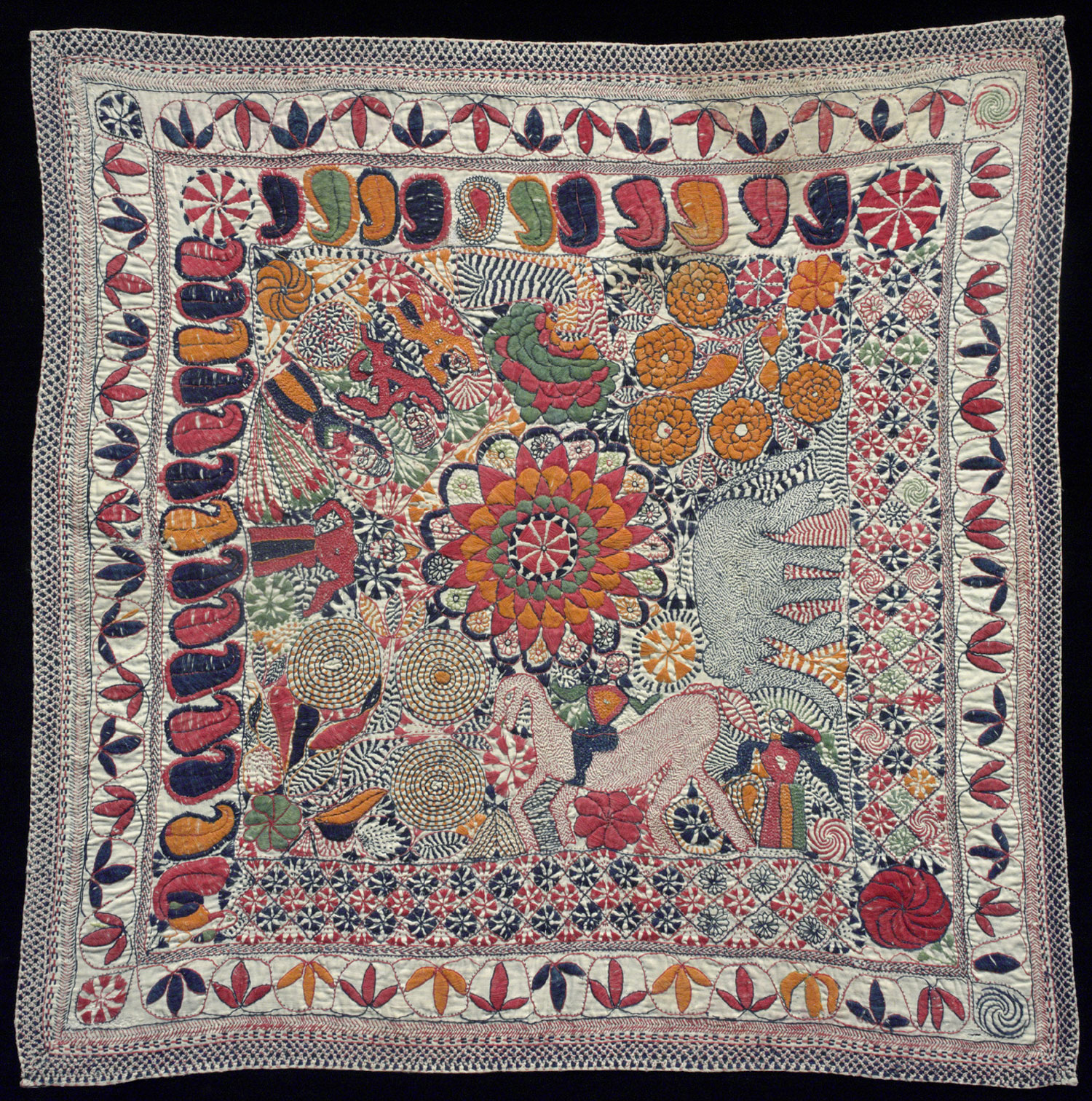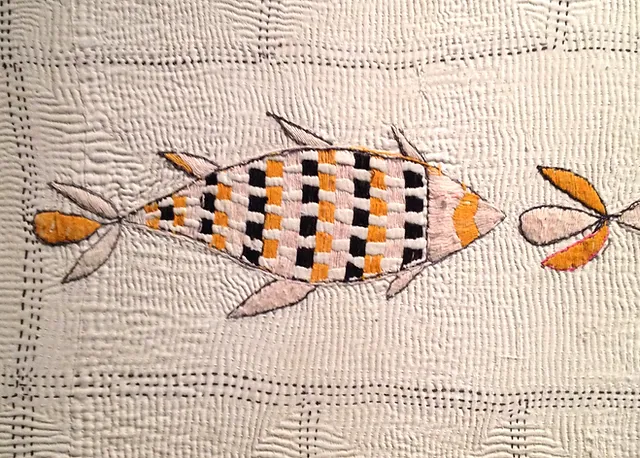The Roots of Kantha Embroidery
The Kantha, a form of embroidery, thrives in 21st-century India, with around 50,000 women embroiderers engaging in what they call “ghore bosa kaaj” or home-based work. This rich tradition of embroidery traces its roots back millennia, as evidenced by archaeological finds of needles in the ancient cities of the Harappan civilisation on the Indian subcontinent. Embracing a diverse array of motifs, patterning, stitches, and symbolism, embroidery continues to flourish. It exists within the realm of professionally embroidered goods and in the development of domestic embroideries crafted by women for personal use or their families.

Passed down orally from mothers to daughters across generations, embroidery embodies profound cultural significance. These domestic embroideries serve as visual expressions of identity, with their designs and patterns reflecting the culture and locale of their creators.Another enduring tradition in the subcontinent is the practice of patching and quilting textiles. These repurposed embroideries, such as the Bengal Kantha, Gudri, Ralli, and Sujni traditions spanning from Western to Central India and Bihar, involve breathing new life into worn textiles. Often sourced from well-regarded origins, these textiles are repurposed for personal use or as cherished gifts.
Transcending Nature of Kanthas
Kantha embroidery stands as a cultural treasure rooted in the historical and geographical expanse of the undivided Bengal region within the Indian subcontinent. Originating as a means to repurpose and breathe new life into worn-out saris and dhotis, traditional garments for women and men, Kantha embroidery has transcended borders, flourishing on both sides of the present-day divide between India’s West Bengal and the neighboring country of Bangladesh.Tragically, the earliest material evidence of this domestic tradition’s historic roots only dates back to the early 19th century.

These artifacts can be found in collections assembled by individuals like Gurusaday Dutt, a civil servant with a deep appreciation for rural art, and Stella Kamrisch, a renowned Indologist. Many pieces are also housed in private collections and museums globally. The fragile nature of the materials used and the challenging tropical climate of Bengal have made dating the tradition’s origin difficult. Nonetheless, it’s certain that Kantha embroidery was widespread across undivided Bengal, transcending social, economic, and religious boundaries, with techniques, processes, and aesthetics deeply rooted in antiquity.
Traditional Kantha and they were Stitched
The core of Kantha embroidery lies in the Bhui Phor or base Kantha quilting stitch. This foundational allover embroidery employs a single-ply thread in a colour resembling the base fabric, creating a rippled, three-dimensional effect. Two-ply threads, often pulled from the borders of saris and dhotis, are used for embroidered patterns, offering variations in stitches and colours. The Kantha vocabulary is built on the basic Kantha Phor, which allows for numerous creative variations, such as the box-stitch, ant-stitch, bend-stitch, and mat-stitch. Vaishnav Kanthas, on the other hand, were embroidered invocations to Hindu gods like Lord Rama and Krishna, embodying acts of piety.
Types of Kantha Embroideries
Arshilata, a slender rectangular cover, showcases scenes from Krishna Leela and Radha-Krishna, alongside lotus, zig-zag, and scroll motifs. Bayton, a square cover, features the lotus with hundred petals and mandalas, adorned in vibrant threads like yellow, blue, green, and red. Durjani, or ‘thalia,’ a square Kantha for wallets, boasts intricate lotus borders and nature-inspired motifs. Lep Kantha, a thick winter quilt, displays geometric designs for a wavy texture, while Oar, a rectangular Kantha for pillow covers, features birds, creepers, trees, and foliage. The sujani Kantha, the most celebrated, incorporates lotus motifs, scenes from epics like Ramayana and Mahabharata, folk tales, birds, flowers, and more, its vast canvas allowing for expansive creativity and storytelling.

Contemporary Kanthas Reflecting Changing Times
In contemporary times, Kantha has evolved from its origins into a commercial craft, becoming a significant product for both domestic and overseas markets. This transformation has not only economically empowered women embroiderers but has also fostered creativity, resulting in innovative motifs and patterns. The Kantha embroidery tradition continues to change and adapt to the newer ways of life, incorporating symbols and changes of time. A significant evolution is evident in the array of items adorned with Kantha embroidery. While it was once primarily found on pillow covers, wallets, and book covers, today, it graces a diverse range of garments and accessories, including sherwanis, Kantha-stitched sarees, dhotis, pants, kurtas, dupattas, and shirts.

Contributor





